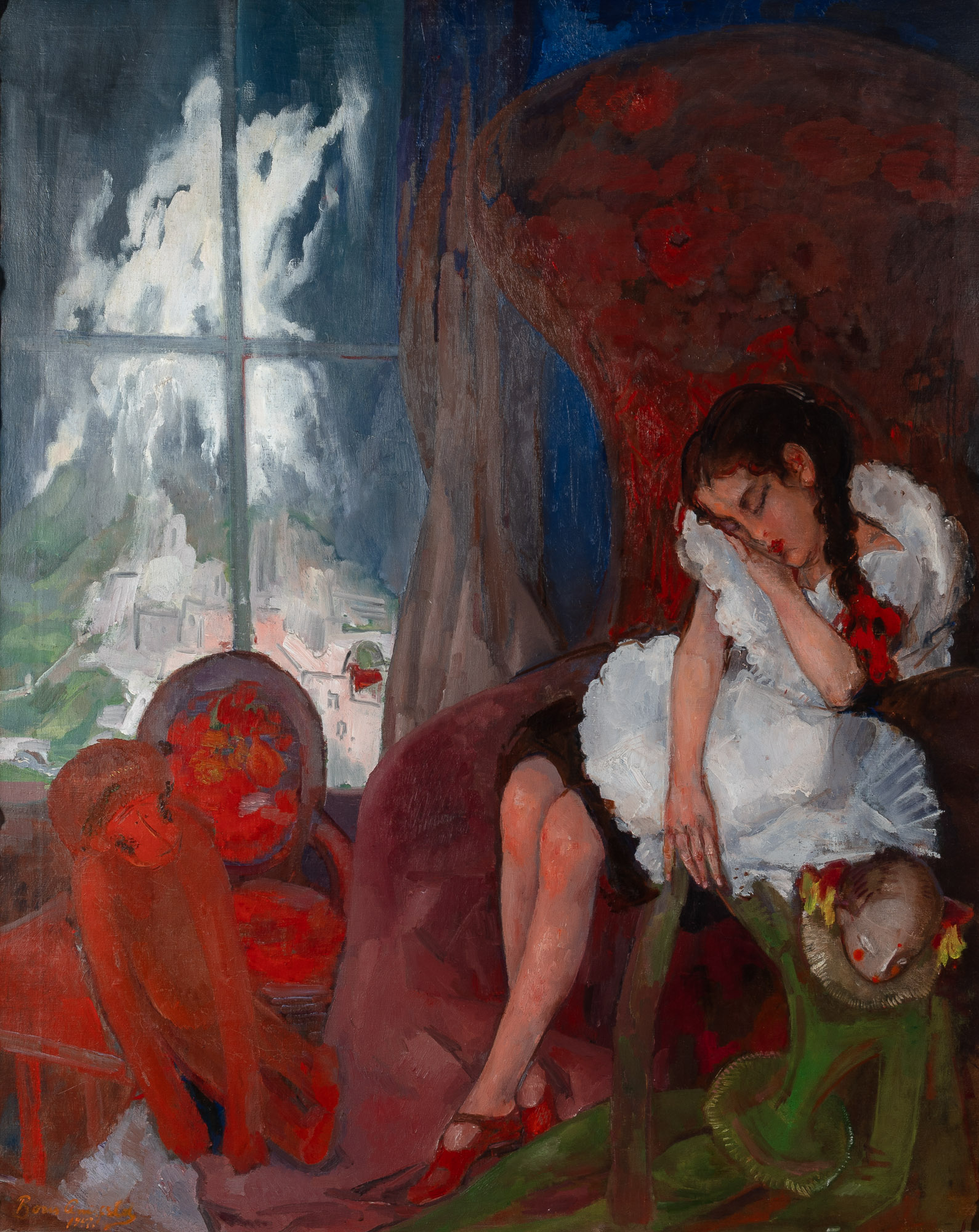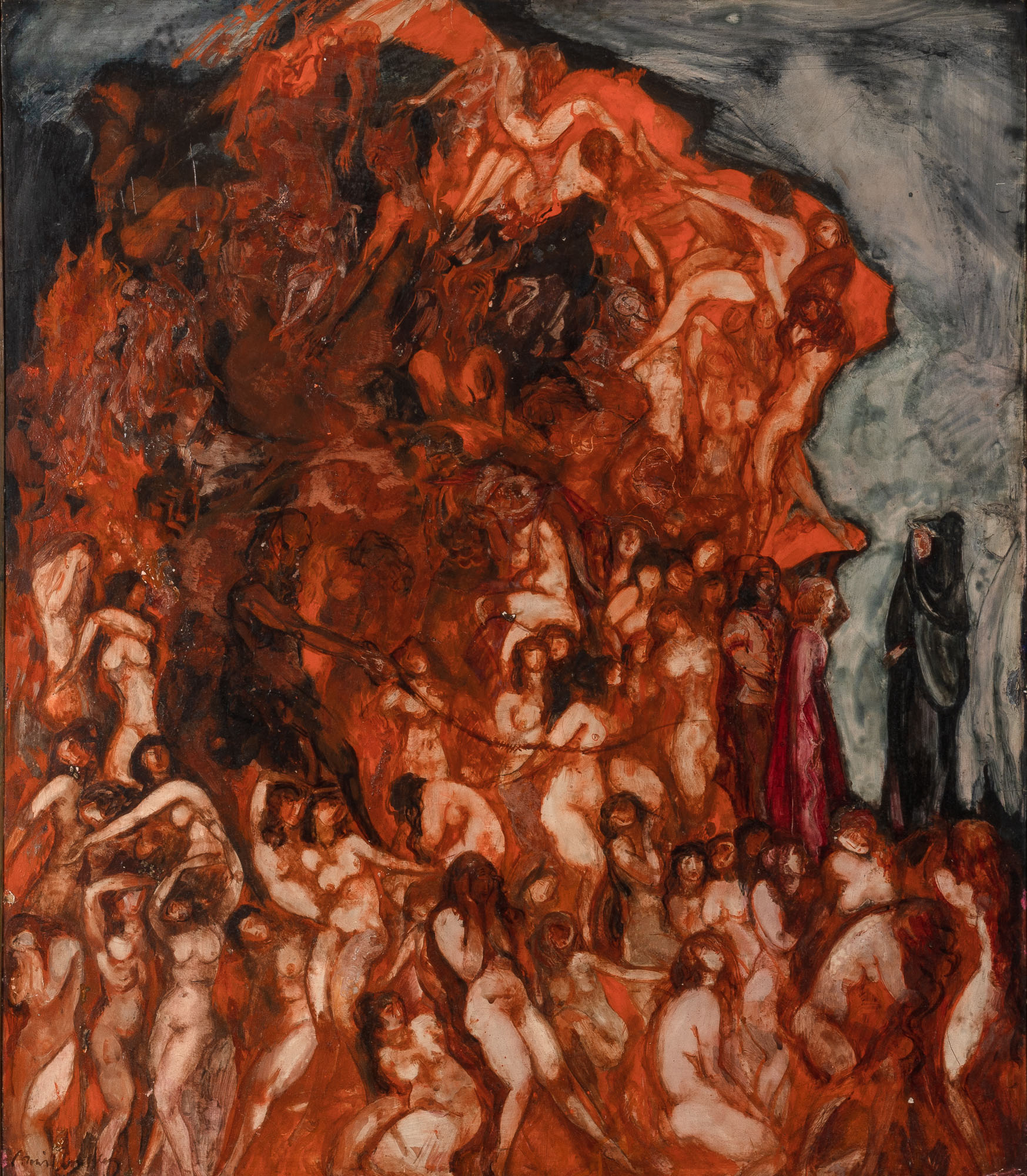

08/06/2025 General, General Paintings, European Art, Russian Works of Art
“Anisfeld is in fact a spontaneous man, but his spontaneity is based not on history, or poetry, or nature, but on sheer color.”
— Alexandre Benois
Born in late 19th century Russia, the creative potential of Boris Israelvich Anisfeld was evident from an early age. As a child, he was encouraged to draw, play violin, and sing folk songs. Between 1895 and 1910, Anisfeld formally trained at the Odessa Drawing School and the Imperial Academy of Arts in St. Petersburg under Russian masters Gennady Ladyzhensky and Ilia Repin. These early experiences shaped Anisfeld’s approach to painting and remained central to his work throughout his career.
Anisfeld’s artistic inspiration derived from Russian Symbolist artists. The Blue Rose, a Symbolist group in Moscow, was most active from 1904 until 1908, a pivotal time in his development as an artist. The group rejected formal qualities and relied on color as the leading method of establishing rhythm in a painting. Symbolists often experienced synesthesia, or a mixing of the senses, a perceptual phenomenon that results in heightened sensory feeling. Anisfeld was said to possess this unique trait himself.
Rising tensions from the Russian revolution and a stall in his career led Anisfeld to immigrate to the United States in 1917. He soon partnered with the Metropolitan Opera of New York, where his sets were showcased in productions featuring the Russian prima ballerina Anna Pavlova and the renowned impresario Serge Diaghilev. American critics and press were immediately drawn to his dynamic and colorful stage designs. A rise in Russian performances in New York City allowed American audiences to appreciate his sublime creations.
Anisfeld defied social expectations, remaining indifferent to the artistic and theatrical circles that surrounded him. Many critics viewed the decadence in his art as harmful to young audiences. A decline in the quality of his theatre work and the death of his wife drove Anisfeld to move yet again during the 1930s. His new residency in Chicago brought an increase in studio painting and a teaching career spanning twenty-six years at the Art Institute of Chicago.
Anisfeld’s style combined Russian practice with modern Western culture. Responding to shifting European art movements, his work reveals influences from Cubist, Fauvist, and Italian fresco painting. Anisfeld’s remarkable talent for color is undeniably evident in two compelling works sold during Doyle’s Russian Paintings auction on June 10, 2025.

Storm, circa 1919-1920 (Lot 31) depicts the artist’s daughter, Morella Anisfeld, sleeping comfortably in a large red armchair. The girl’s white dress, red slippers, and braided hair allude to her childlike innocence. Her dolls are loosely sprawled on the floor, suggesting that the entire composition is at rest. Despite Morella’s relaxed posture, a grueling storm swirls in the landscape behind her. A large flash of lightning illuminates the dark sky, towering over the town below. Anisfeld seamlessly contrasts the indoor and outdoor settings through his powerful use of color.

In Francesca da Rimini (Dante's Inferno, Canto Quinto), circa 1930s (Lot 32), Anisfeld applies a similar color palette to render a different subject. He depicts the first part of the historical literary tale The Divine Comedy by Dante Alighieri. Inferno’s evil traits are depicted through deep, fiery reds and heaps of nude bodies. The two lovers of the story, Francesca da Rimini and Paolo Malatesta, are seen on the right side of the composition, soon to be engulfed by the burning whirlwind of hell behind them. No other artist has illustrated this scene in such an energetic manner. Anisfeld’s vast exposure to various art movements is reflected in his modern depiction of the ancient tale.
Both works performed strongly at the June 2025 Russian Paintings auction, with Storm achieving $35,200 and Francesca da Rimini (Dante's Inferno, Canto Quinto) realizing $11,520. The impressive results for Boris Anisfeld’s paintings, along with other highlights in the sale, underscore the growing strength of the market for Russian art.
— Joanie Farley
DOYLE New York
Summer Intern 2025
Doyle’s Specialists are currently evaluating Russian Paintings & Works of Art for upcoming auctions. We invite you to contact us to explore the potential of your collection.
Milan Tessler, 212-427-4141, ext 266, Paintings@Doyle.com
Mark Moehrke, 212-427-4141, ext 272, Russian@Doyle.com